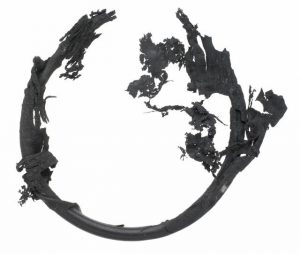A Guide To What Can Cause O Ring Failure
Jul 3, 2018
 O-rings are one of the most widely used, reliable and inexpensive components of precision machinery, but they are not completely infallible. Certain issues can lead to O-ring failure, and when this happens, it’s crucial to identify the cause behind the fail so that it doesn’t happen again. Here’s what you need to know about O-ring failure, and the typical reasons why.
O-rings are one of the most widely used, reliable and inexpensive components of precision machinery, but they are not completely infallible. Certain issues can lead to O-ring failure, and when this happens, it’s crucial to identify the cause behind the fail so that it doesn’t happen again. Here’s what you need to know about O-ring failure, and the typical reasons why.
Typical causes of O-ring failure
Experience shows us that the most common reasons for O-ring failure include:
- Improper gland design: When the gland allows too much or two little compression, the O-ring can fail.
- Incorrect O-ring size: An improperly sized O-ring can fail under pressure.
- Incorrect O-ring material: Hardness and type of material must be correctly selected to ensure failures don’t occur.
- Improper installation: O-rings must be correctly sited to ensure they can function effectively.
- Improper lubrication: An O-ring requires adequate lubrication to allow it to flex freely under pressure.
- Contamination: Chemicals and other environmental elements that come into contact with the O-ring can cause degradation and failure.
If you’ve experienced O-ring failure, you’ll need to narrow down the cause to prevent another issue further down the line. Sometimes inspecting the failed O-ring can give clues as to why the failure occurred. Let’s take a look at some of the most commonly encountered problems and how you can diagnose the fault.
Abrasion
Abrasion occurs when there is repeated contact between the O-ring and the materials it is housed within. Without proper lubrication, this contact can start to wear away the O-ring, eventually causing failure. You can check for this by inspecting the O-ring and noticing a grazed surface. In more damaged components, there may be deep lacerations and even breaks.
The fix: Use the correct O-ring sealing material when assembling the system and ensure that the metal surface of the housing is correctly finished.
Compression set
This issue means that the O-ring has lost its elasticity and is unable to return to its original O shape. It can be caused when working with elevated temperatures and is a particular risk when the gland design is faulty. You’ll notice that the O-ring has become flattened and is less circular in shape.
The fix: If you’re working with extreme temperatures, using elastomer materials with higher temperature capabilities or low compression set ratings will extend the life of your O-ring.
Nibbling and extrusion
Under extremes of high pressure, the O-ring can be forced into the gaps in the housing, causing what is known as extrusion. You’ll see evidence of this if the ring has a frilly appearance on the low-pressure side. Cycles of pressure and no pressure can cause the ring to become damaged on this extruded edge, a condition we call nibbling which is evident by chipping and peeling of the O-ring’s edge.
The fix: Using a harder seal can help, as can using secondary O-rings to reduce gaps in the assembly.
Thermal damage
O-ring failure can occur if the operating temperature is higher than the temperature limit of the material in use. Two types of damage can occur in this situation. The first is known as thermal degradation, where the temperature has reached such a level that it has interfered with the chemical composition of the O-ring, making it harder and less elastic. You’ll see evidence of this if the surface of your failed O-ring is cracked or shiny. Thermal extrusion occurs when the O-ring extrudes into the gaps on both sides due to temperature elevation. Unlike the extrusion discussed above, this will often occur on both sides of the ring.
The fix: Choosing the right material for your O-ring is essential, so if you know you’ll be working at high temperatures, take advice on which materials will cope. Designing the gland so there is sufficient space to accommodate the expanded O-ring can avoid extrusion too.
There are numerous other reasons for O-ring failure, so if you’ve encountered a problem and cannot diagnose it from our guide, get in touch with our experts and we’ll be happy to help. When used correctly, O-rings are amazingly robust pieces of kit, so take professional advice and ensure you’re getting the right tool for the job.
